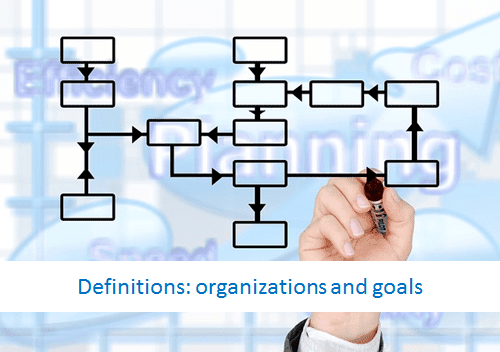
Specific characteristics
Organizations have some specific characteristics, such as profit/non-profit, national/international and little/middle/ large. However, three general characteristics apply to all types of organizations (Keuning and Eppink, 1993):
- people, who;
- collaborate;
- to achieve a specific goal.
People collaborate since they have personal goals which are difficult to achieve without working together.
1. Profit versus not for profit
The profit and non-profit characteristic is obviously linked to the goal of the organization. Non-profit organizations are basically not profit seeking. Later in this paragraph, I shall explore how the goals of an organization can influence the user interface of business intelligence systems. The national/international characteristic influences aspects of the user interface because of the difference between currency and culture of the countries where an international business is situated.
Large organizations and strategic decisions
Furthermore, I suppose that a strategic decision in a large organization needs generally a long time to be fully worked out and implemented. In one of the next items, covering cybernetic systems, I reach more detailed conclusions about this characteristic. Generally, small organizations are less stable than larger organizations. Therefore, deviations compared to previous periods should be more thoughtfully communicated on dashboards in small organizations or a larger period should be taken into account.
Combination of internal and external parties
In fact, the organization is a combination of both internally and externally interested parties like employees, suppliers, customers, trade unions and governments. These parties are to some extent dependent on the organization and concerned about its functioning and have specific interest in its (continued) existence (Keuning and Eppink, 1993).
Parties and situations
To be more specific the environment of the organization is divided into two subjects: parties and situations. Parties are, directly or indirectly, participants of the organization, like employees and vendors. Situations are developments like labour market situation; something that has no interests but does indeed influence the organization (Keuning and Eppink, 1993). Parties operate in the transactional environment, where real trading occurs. Situations are comprised of the contextual environment, which influences the transactional environment (Emery and Trist, 1969).
2. Different types of management
In order to make decisions, corporate as well as environmental (parties and situations) information is important for managers. External information will even be more important for senior managers than corporate information since it can manifest future threats and opportunities (Mintzberg, 1973). It is strategic in nature and gives context to the functioning of the organization. Both types of information play a vital role in executive decisions.
Combine external data with internal data
External factors, such as economic trends and competitive actions, should be combined with internal data. A distinction between both types gives the manager an idea as to which factor(s) may cause problems. Therefore, the difference between internal and external information can be made visible by using, for instance, different colours or shapes. Furthermore, external situational information can be visualized differently or can be situated in a different place on the screen such that it is perceived as contextual and uncontrollable.
No comments:
Post a Comment